Kathy Fayant, a master naturalist with the Lake of the Ozarks Chapter in Camdenton, paddles her kayak ahead of me, using her paddle to point out areas of interest along the Big Niangua River Trail. Turtles sun themselves on every log, and blue herons call in the distance. It’s a perfect day on the water, and I can almost hear American naturalist John Muir’s voice:
“When one tugs at a single thing in nature, he finds it attached to the rest of the world.”
It is this connection with nature, and the hard work by people to make it a lasting legacy, that makes the mission of the Missouri Master Naturalist Program a vital one. The program’s mission is to engage Missourians in the stewardship of the state’s natural resources through science-based education and community service. It’s a group of like-minded, adult volunteers tugging away at these community conservation projects and coming together for a bigger purpose — to protect and promote our natural resources in Missouri. They do it in a big way.
The Master Naturalist Program, created in 2004, is a partnership between the Missouri Department of Conservation and the University of Missouri Extension.
There are 12 Master Naturalist chapters around the state, each becoming their own volunteer family and working on a variety of projects in their respective communities. “People volunteer for this program because of the variety of activities where they can do individual projects and work with a group,” said Syd Hime, volunteer and interpretive programs coordinator with the Conservation Department. “They do such cool things, and we’ve learned that chapters build a social network among themselves.”
A Labor of Love
The 13.3-mile water trail starts at Ha Ha Tonka State Park and flows through 20 marked interpretive spots (A through T), including natural springs, wetlands, and caves. This unique water trail was made possible by the work of the Master Naturalist Program and other key partners such as the Conservation Department, Missouri State Parks, Ameren Missouri, and the Lake of the Ozarks Watershed Alliance.
The project was a labor of love. In addition to community partnerships, the Lake of the Ozarks Chapter Master Naturalist team, led by Fayant, had to get permission from private landowners along the trail, develop a trail brochure, and mark all the interpretive sites with signage, including many way up in trees. It took everyone’s time and talent, including the unique gifts of one limber fisheries biologist.
“It was exciting seeing all the groups come together and people with different talents sharing those skills and interests,” said Greg Stoner, fisheries biologist with the Department. “My role was helping with the brochure and getting the signs up along the trail. I was the only one good at shimmying up trees.”
The trail opened last year with more than 100 people at the grand opening. Many of the chapter volunteers, now active kayakers, also started a monthly kayak meet-up event on the second Saturday of each month to go out on the trail together. All are welcome.
“It’s a unique and different outdoor experience than most have had at Lake of the Ozarks. It’s a quieter activity and a way to get close to nature in a beautiful setting,” said Fayant. “The purpose of the trail is to get people out in nature, so they’ll appreciate and hopefully conserve it.”
Nature’s Classroom
Getting people out in nature is the goal of many Master Naturalist chapters, including the Confluence Chapter in St. Charles. In partnership with the St. Charles County Parks Department, the Confluence Chapter built a Nature Explore Classroom in Towne Park to create a place for outreach programs for youth. Gary Schneider, a master naturalist since 2006, and Joe Walker took the lead on building the outdoor classroom.
“We stepped in as master naturalists to coordinate and build 11 different areas. On a good day, we had eight to 10 people working out there, including help from local high school students,” said Schneider.
While Schneider’s strength is construction, Connie Campbell, a retired schoolteacher and also a master naturalist, volunteers to assist the masses of school kids now flocking to the area for field trips. Campbell helps the kids with the different outdoor learning stations, including fishing at the pond, balancing activities, singing and dancing on the musical stage area, and pedaling on a bicycle to pump water to and from the lake.
“This classroom was designed for kids to use the stations for free play and their own imagination. I love to see the delight on their faces and how engrossed they get in it,” said Campbell. “So much of entertainment is video games and on the computer. Kids don’t get outside. It’s important to bond with nature.”
In the last two years, more than 1,800 kids from the St. Charles County area have come to play at the park, built by the hands of volunteers hoping to make a lasting impression.
“Being a master naturalist has helped me realize we should try and preserve nature. This is the only planet we have. We can’t mess it up. We must protect it. It’s time for us to give back,” reflects Schneider.
Making Science Happen
When Marge Lumpe moved back to Missouri after living in Texas for 41 years, she was eager to find a conservation- minded group like many of those she was part of in Texas. When she heard Hi Lonesome Master Naturalist Chapter was starting in Cole Camp in 2008, she jumped at the chance to be part of the first training class with 25 other people in the area. “After moving back, I was a little desperate to connect with conservation here in Missouri,” admits Lumpe. “When they started a Master Naturalist chapter, I was ecstatic!”
With the Drovers Prairie Conservation Area being close by, which has 80 acres of remnant prairie and has been designated by Audubon Missouri as an important bird area, Lumpe, a lifetime birder, helped start one of the chapter’s biggest annual projects — the Christmas Bird Count. This annual bird count is the nation’s longest running citizen-science bird project, and data collected by participants provides a wealth of information to researchers doing long-term studies of early winter bird populations across North America.
In addition to bird counts, the chapter also helps with frog and toad surveys, as well as taking advantage of unique opportunities, such as trapping greater prairie chickens in Kansas. It’s that life-long learning, plus the opportunity to help others learn more about conservation, that keeps Lumpe excited about being a master naturalist.
“It’s a fun thing for people who want to learn all their life. You can follow your bliss,” said Lumpe.
Building Healthy Communities
Highways leading into major metropolitan cities are more likely to be lined with asphalt than beautiful butterfly gardens. The Osage Trails Master Naturalist Chapter in Kansas City is hoping to change that.
Mary Nemecek, who was part of the 2009 Master Naturalist class, helped start a butterfly garden along the highway in Parkville in the spring of 2015. Through a grant from the Platte Land Trust, the team put in two small gardens, both totaling 2,100 square feet, planted 20 feet apart. Master naturalists put in the garden, and they meet regularly for workdays for ongoing maintenance. Community members are also invited to help. The most surprising part of the project for Nemecek was how quickly the community embraced the project.
“We put this garden in and people started claiming it as their own. Stuff just started showing up in the garden like garden art. People even honk when we’re working out there,” laughs Nemecek.
Perhaps even more exciting than the garden art and neighborly honking, was the appearance of the visitors they hoped would arrive in their highway garden — monarchs. These iconic butterflies are found in a wide variety of habitats throughout their annual migrations to and from Mexico. Unfortunately, habitat loss and other factors are causing a decline in this species. Missourians are encouraged to plant milkweeds for the larvae and other native flowers that supply the nectar for adults. It is a success story Nemecek hopes to be part of as a master naturalist.
“I believe our future is really dependent on bringing native plants back into our urban areas,” said Nemecek. “I think the key is to put them back in places where people can see them every day and say, ‘gosh, look at all those butterflies’ and then want to put them back in their yards.”
Getting people’s attention about nature, especially those driving down the highway, is also the goal of the Loess Hills Chapter in St. Joseph. The chapter set out with an ambitious six-year goal — plant trees along Highway 36 all the way from St. Joseph to Hannibal. More than 50 years ago, native trees had lined the highway, but making room for a four-lane highway meant many of those trees were removed.
“Highways are getting sterile. Driving along a scenic highway is not an event anymore. We wanted to bring back that scenic driving experience with trees and signs to help people know more about the trees,” said TJ Peacher, outreach and education district supervisor with the Department.
Phase one of the project started in 2014 with the planting of 160 native trees every 5 miles from St. Joseph to Cameron.
Phase two is getting underway this fall with tree plantings from Cameron to Brookfield, with the final phase from Brookfield to Hannibal to be completed in 2018. A project of this size and scope also includes many partners, including tree seedlings from the George O. White State Forest Nursery and help with mowing and site selection from the Missouri Department of Transportation.
Mary Jo Ostenberg, who was part of the first Master Naturalist class in 2011, has been with the project from the very beginning. While there are still years of tree planting work ahead, she hopes it will be a project remembered for generations.
“This was a project we could all do together. Our grandchildren will drive down that road and see all the trees we planted,” said Ostenberg. “I hope we can leave a legacy to see what the Master Naturalist chapter is all about.”
In the end, the greatest legacy for master naturalists in Missouri is their ability to work together, their passion for conservation, and their gift for educating others about why it matters. It’s also their open invitation for others to join them on this journey.
“We need to bring nature back into our lives. It doesn’t matter if you are 2 or 92. Nature needs you,” said Nemecek.
By the Numbers — Missouri Master Naturalist
- To become a certified Missouri master naturalist, volunteers complete a 40-hour training course covering Missouri natural history, wildlife management, and natural resource interpretation.
- Volunteers contribute an additional 40 hours of conservationrelated volunteer service each year, including additional hours of ongoing education, to retain their certification.
- Through the 12 chapters, 1,855 volunteers have been trained as master naturalists since the program started in 2004.
- During 2015, volunteers provided 64,157 hours of community service with an economic impact valued at $1.6 million.
- More than 387,000 hours of volunteer service have been provided to local communications since 2004, with a cumulative economic impact of $8.3 million.


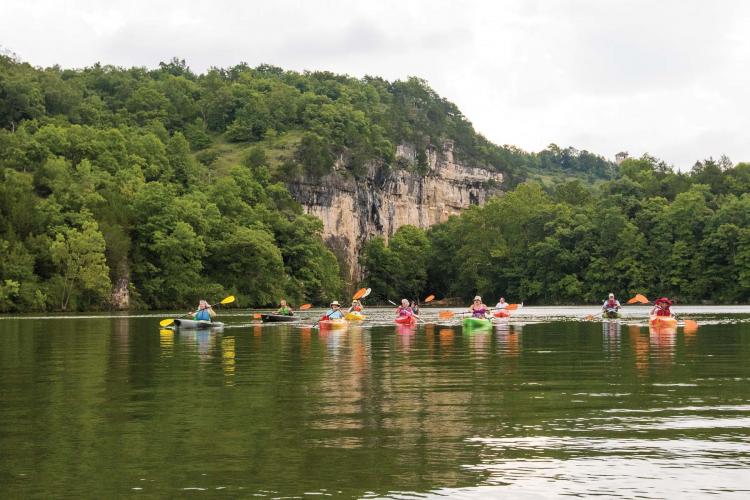


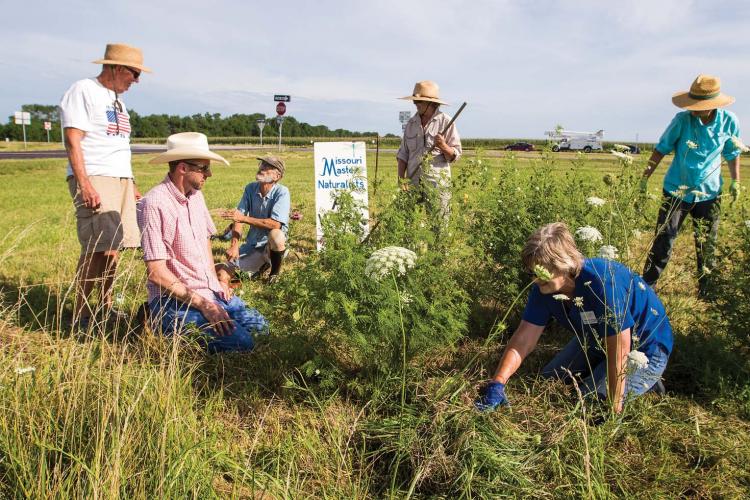
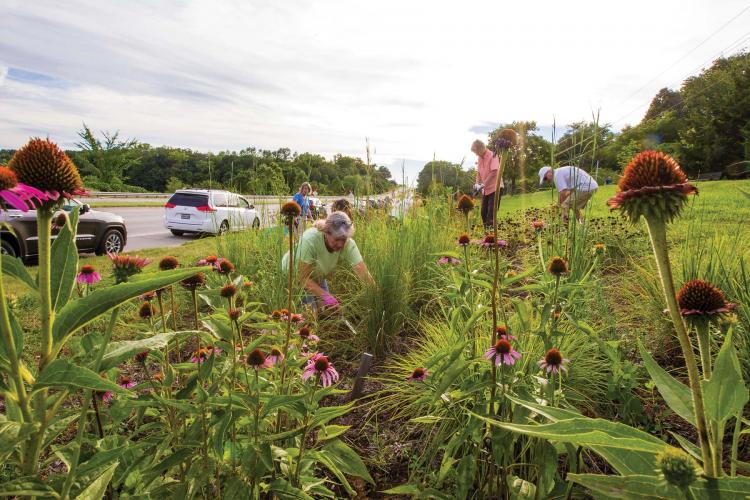


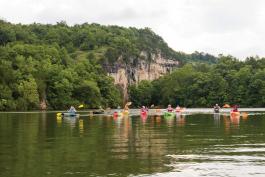
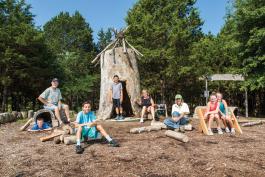



Also In This Issue


And More...
This Issue's Staff
Art Director - Cliff White
Associate Editor - Bonnie Chasteen
Staff Writer - Heather Feeler
Staff Writer - Kristie Hilgedick
Staff Writer - Joe Jerek
Photographer - Noppadol Paothong
Photographer - David Stonner
Designer - Les Fortenberry
Designer - Marci Porter
Designer - Stephanie Thurber
Circulation - Laura Scheuler






















